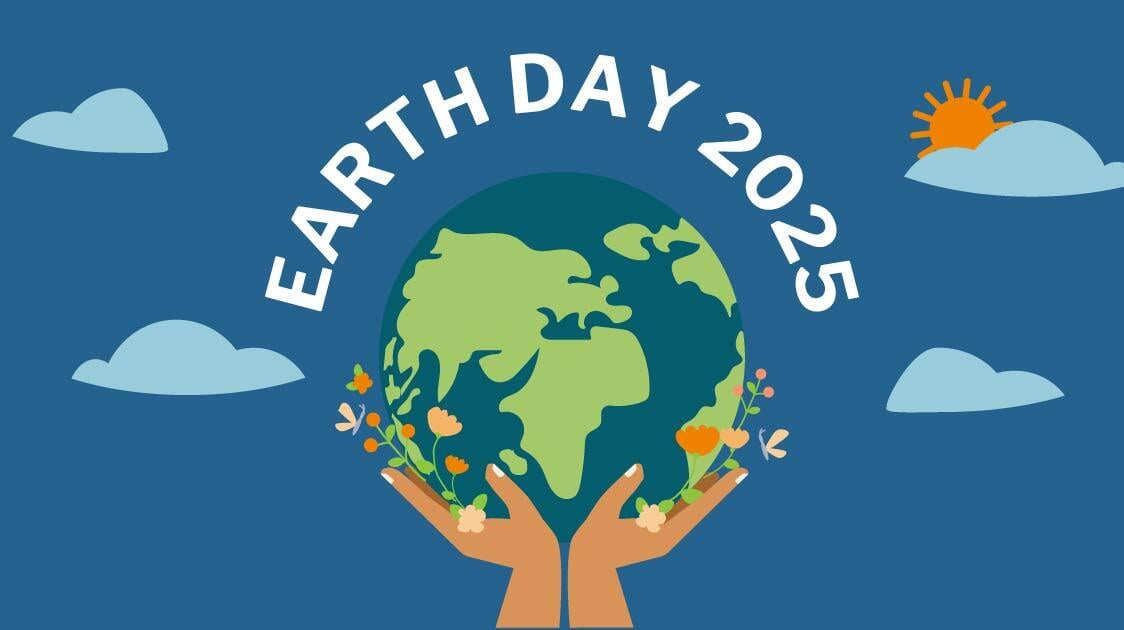Earth Day 2025: Our Power, Our Planet #RenewableEnergyNow
April 9, 2025 •Dr. Julie Sessions, Curriculum Consultant

#RenewableEnergyNow
Tuesday, April 22nd marks the 55th anniversary of EARTH DAY and this year’s theme hits close to home for us: renewable energy! This is the perfect time to inspire students to think critically about the environment and the role they can play in shaping a sustainable future.
The Urgent Need for Renewable Energy
Our planet is rapidly approaching several tipping points. The solution is evident: we must expedite the transition to renewable energy. Fossil fuels continue to drive climate change through the release of carbon dioxide (CO2) and other greenhouse gases when burned for energy. Transitioning to renewable resources is crucial for reducing greenhouse gas emissions and mitigating climate change impacts.
Fossil Fuels and Climate Change
- Combustion of Fossil Fuels: Burning coal, oil, and natural gas releases CO2, methane, and nitrous oxide, which trap heat in the atmosphere, leading to the greenhouse effect.
- Increased Atmospheric CO2: Higher levels of CO2 contribute to global warming, causing changes in weather patterns, rising sea levels, and more extreme weather events.
- Deforestation and Land Use: Fossil fuel extraction often leads to deforestation, reducing the number of trees that can absorb CO2.
Renewable Resources and Climate Mitigation
- Lower Emissions: Renewable energy sources like solar, wind, and hydroelectric power produce little to no greenhouse gases during operation.
- Sustainable Energy Supply: They provide a sustainable and virtually inexhaustible energy supply, reducing reliance on fossil fuels.
- Energy Efficiency and Storage: Advances in energy storage and grid technologies enhance the reliability and efficiency of renewables, making them a viable alternative to fossil fuels.
Benefits of Transitioning to Renewable Energy
- Affordable and Sustainable Power: Ensures energy access and equity for everyone, powering homes, schools, and hospitals worldwide.
- Job Creation: The renewable energy sector is booming, offering millions of new jobs and driving economic growth.
- Health Improvements: By reducing fossil fuel-induced pollution, we can improve air and water quality, prioritizing health and health equity.

The Role of Educators
Empowering students to have a voice in the future is key to making the essential changes needed. Here are some remarkable renewable energy facts to share with your students from Earth Day 2025 - Our Power, Our Planet - Earth Day:
- In the U.S. in 2023, the US produced more solar power than ever before with California, Texas, Florida, North Carolina, Nevada and Arizona the states leading the solar revolution. It is helping to produce the cheapest electricity in history.
- In the United States, Texas—long associated with oil production—now leads the nation in wind energy generation.
- The U.S. also has used its existing drilling capacity to become the world’s leading producer of advanced geothermal energy.
- California and Florida, states often at odds politically, are both at the forefront of the solar power boom.
- Across the U.S., solar capacity has grown over ten-fold in the last decade, and is poised to become the 2nd largest source of USA’s generating capacity in the next few years.
- China and the U.S. (largely through the Inflation Reduction Act) are both making massive investments in renewable energy. China is currently leading the world in both wind and solar, with twice as much capacity under construction as the rest of the world combined in 2024.
- Uruguay has transformed its energy sector, moving from being dependent on oil imports to generating 98% of its electricity from renewable sources.
- India has set ambitious goals for renewable energy, aiming to achieve 50% of its energy requirements from renewable sources by 2030.
- Kenya is a leader in Africa, with geothermal power accounting for nearly half of its electricity generation. Geothermal can be beneficial for the electrical grid, as it puts less strain on it and can help mitigate blackouts. Geothermal also emits 97% less acid rain-causing compounds and 99% less carbon dioxide.
- A third of all homes in Australia use solar power.
- In Brazil hydro-electric accounted for nearly 68% of its total electricity generation in 2023. Italy is at 23% and growing, Netherlands at 16%.
- In Denmark, over 50% of the country’s electricity is generated from wind turbines (and has already provided 100% of its power over a 24-hour period) and by 2026, wind energy will power 30% of Spain, 17% of the Netherlands and 23% of the electricity needs of Germany.

Check out these 55 RENEWABLE ENERGY IDEAS to help inspire ways to get students of all ages experiencing renewable energy activities and help be a part of the change to #RenewableEnergyNow!
Earth Day Facts and Sponsored Activities:
- Earth Day 2025 | Activities & Resources for April 22 - Earth Day
- Earth Day Live: Debating Planet Earth's Urgent Issues - Earth Day
- Climate-Change-impacts-K12_Report_v4.pdf
- Earth Hub - Earth Day
- News and Stories - Earth Day
- Earth Day 2025 | Activities & Resources for April 22 - Earth Day
- Our Power, Our Planet - Renewable Energy Petition
QUIZZES and FACT SHEETS
